Fujifilm X-T4 Mirrorless Camera Review:
The Fuji X-T series of cameras have enjoyed great success because let’s face it, they’re decent cameras no matter which model you have. Whether you’re shooting with the first generation X-T1 or a newer model like the X-T3, you have a camera that offers you great versatility, portability, power, and excellent image quality. With all that said, there is always room for improvement, which is why we now have the new X-T4. How much has the X-T4 been improved though, and is it worth it to you? Let’s take a closer look.
Admin Note: I was testing the X-T4 when NYC just got out of lockdown from the Covid-19 pandemic, so I was still limiting myself to certain locations to shoot, and how long I would go out shooting. There are less pics (and variety) than what I would normally post for a review before the pandemic. Still, there are plenty of pics that will show what this camera can do.
Fujifilm X-T4 Mirrorless Camera Build Quality:
So, let’s start off with build quality. The new Fuji X-T4 may look like its predecessor, the X-T3 but on closer inspection, there are some subtle differences. For instance, it is a bit larger in general but this is not a bad thing. I still own my X-T3, and I can tell you that ergonomically, the X-T4 feels a lot better in my hands. It also feels more robust. For instance, the SD card slot area is designed better, and offers better access to the cards (there are two card slots). At 526 g, it’s also a bit heavier than the X-T3 but truthfully, I welcome the slight increase in weight. It makes the camera feel a bit better to me, and it also helps with stabilizing it. Lastly, you can get the X-T4 in either black or silver.
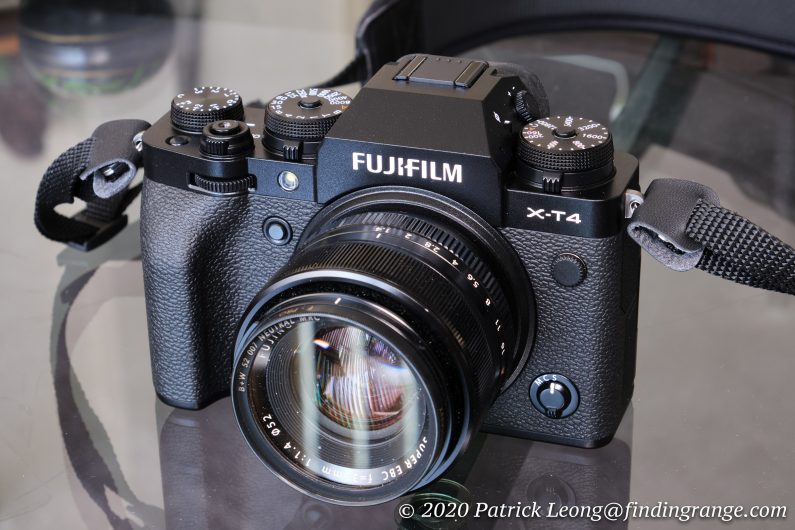
↑ The Fujifilm X-T4 with the XF 35mm f1.4 R lens attached.

↑ The Fuji X-T4 has two memory card slots.
Of course, you don’t need to worry as much about stabilization with the new X-T4 given that now, it has IBIS. In fact, this was one of the features that many felt was missing from the X-T3. The five-axis In-Body Image Stabilization provides up to 6.5 stops of stabilization. The image stabilization drops down to 5 stops with only one lens in the Fuji catalogue so far, and that’s the XF 80mmF2.8 R LM OIS WR Macro. In comparison, this is a definite improvement over the X-H1, which provides up to 5.5 stops of stabilization.
Looking around the camera, you’ll find all the manual controls that have made Fujifilm cameras famous and arguably unique in their perspective classes. Like the X-T3, the X-T4’s top plate incorporates a bunch of dials, and controls for functions like shutter speed, ISO, and exposure compensation (the exposure compensation dial also has a C position, so you can expand the setting up to +/- 5 EV range).
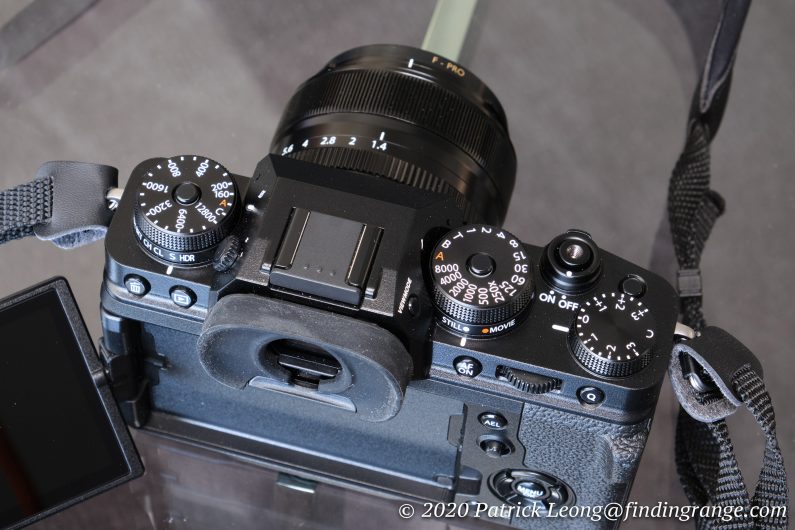
↑ Top plate of the X-T4.
These controls are great, and in my opinion, really help the Fuji X-T4 distinguish itself from its competitors. First off, all these controls can be adjusted while the camera is off. Second, having controls like these that can be directly manipulated with your fingertips makes things straightforward and fast to operate. It’s easier for a photographer, especially someone who may be a newbie to better understand the relationships between say shutter speed, ISO, and aperture (most of the Fuji lenses also have aperture rings). Lastly, it just makes the camera more fun to operate because at least for me, I feel more involved in the photographic process as opposed to just adjusting things in a menu system for instance. Yes, these are old school controls that you might find on film cameras from the past but in my opinion, these types of controls are the best, and therefore, still very relevant for today.
Furthermore, the Fuji X-T4 has a fully articulating LCD display now, which makes this camera not only great for stills photographers but also for vloggers. The LCD display quality is excellent; it has 1.62 million pixels and it’s a touch display. Images look sharp with excellent contrast and color. It’s worth noting that if you wanted to, you can fold away the screen, so it becomes completely hidden. In my opinion, this is the screen that should’ve been on the X-Pro3.
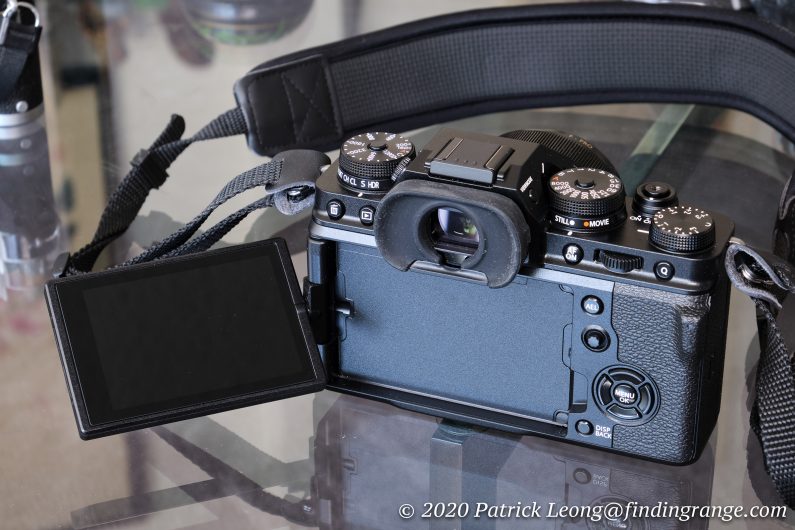
↑ The new vari-angle LCD display.
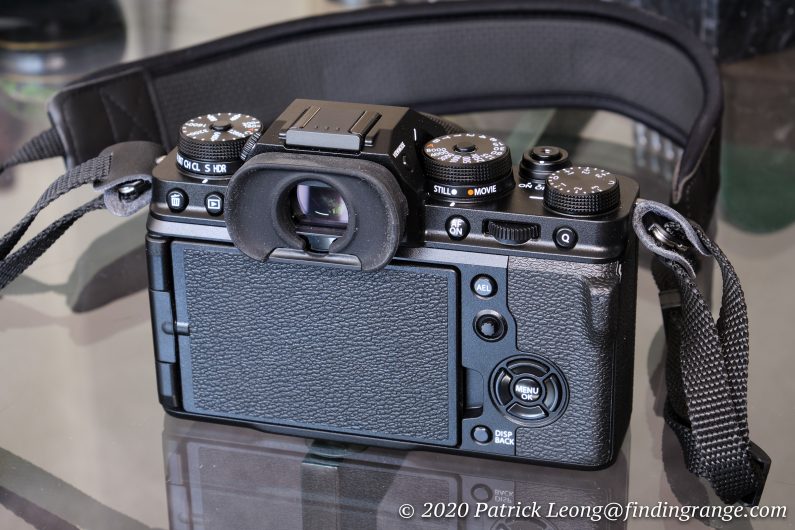
↑ If you want, you can also hide the LCD display.
The electronic viewfinder is equally as good as the LCD display. The Fuji X-T4 comes with a 3.69m-dot OLED electronic viewfinder, which is pretty much the norm now for high end APS-C mirrorless cameras now. Looking through the EVF is a joy given that it has a 0.75x magnification. It’s clear, and sharp. Color and contrast in it are excellent. You are able to push the refresh rate up to 100 fps to reduce lag but I didn’t feel it was even necessary. Quite frankly, with an EVF like this, lag time is a thing of the past.
Let’s take a look at the new shutter, which by the way, has been noticeably improved over the one in the X-T3. The first thing I noticed was how quiet and delicate the shutter operates. In fact, it is suppose to be 30% quieter according to Fujifilm. Furthermore, the durability of the X-T4’s mechanical shutter has been significantly improved. The X-T4’s is now rated for 300,000 actuations, which means it’s twice as durable as its predecessor. Furthermore, you can achieve up to 15fps while also keeping the shutter release time lag to just 0.035 seconds. With the electronic shutter, the X-T4 can achieve up to 30fps in 1.25x crop mode black out free.
These are all great features but what is my favorite in the Fuji X-T4 is the larger battery. I’ve been wanting Fujifilm to put a larger battery in their cameras for a long time now, and they finally have with the X-T4. The high capacity battery is called NP-W235, and it can last for 500 shots per charge in Normal Mode or 600 frames per charge in Economy Mode. If you have the VG-XT4 Vertical Battery Grip, which can hold two additional batteries, you can get up to 1700 shots per charge.

↑ The older battery from cameras like the X-T3 vs. the newer battery of the X-T4.
In actual use, the battery life feels significantly improved when compared to the X-T3’s. With my X-T3, I definitely carry at least one spare battery wherever I go. When I get home, I always make sure I charge the batteries before my next day of shooting. However, with the X-T4’s, I charge the battery once, and often times, it’ll last for two days worth of street shooting for me. I feel the specs that Fujifilm has given us for the battery might even be a bit underrated in actual use. I am so glad Fuji went with a larger battery for this camera.
For those who do more than still photography, the Fuji X-T4 offers an array of video capabilities. For instance, you can record professional-quality 4K/60P 10-bit video at 4:2:0 color internally, and 4:2:2 through the built-in HDMI port. When doing so internally at 200Mbps, the X-T4 also supports H.264/MPEG-4 AVC, and H.265/HEVC to achieve a higher rate of compression. For versatility, you can also choose MP4 in addition to the standard MOV video file format.
Fujifilm X-T4 Mirrorless Camera Autofocus:
As for the autofocus, this area is a major strength for the Fuji X-T4. The camera uses a hybrid autofocus system that combines 425 phase-detection points with a contrast-detection system for fast and accurate performance. As of February 2020, A new AF algorithm in the X-T4 enables focusing speeds of 0.02 seconds, which is the fastest AF among APS-C sensor mirrorless cameras. The AF can produce sharp photos right down to -6EV, so you shouldn’t have any issues with low-light performance either.
In practice, the autofocus performance is superb. With so many cameras always constantly coming out these days, having say a camera with the fastest autofocus doesn’t usually last that long ;). However, even if it gets trumped by whatever next, the X-T4’s performance would still be up there with the best. The autofocus system locks on tenaciously to your subject, not only quickly but with such accuracy as well. It’s also worth noting that the AF is so good that I don’t even feel that much of a difference when I am shooting in dimly lit areas. Tracking is excellent as well. I tested this camera with older lenses, and even one of the newer ones, which was the XF 16-80mm f/4 R OIS WR Lens: the autofocus is just about perfect. Even older lenses like the XF 35mm f1.4 and the XF 56mm f1.2 APD feel faster.
Furthermore, the Face and Eye Detection AF is spectacular. I do mostly street fashion and boudoir for my own work, and the Face and Eye Detection AF is just so good. It’s fast, reliable, and accurate. There’s no drama whatsoever.
Fujifilm X-T4 Mirrorless Camera Image Quality:
In terms of image quality, the Fuji X-T4 uses the same 26.1MP APS-C X-Trans CMOS 4 sensor, and X Processor 4 image processor as the X-T3. So image quality is pretty much the same. Overall, the X-T4 produces stellar images, and it is up there with the best in its class. The sensor is back-illuminated for improved light receiving performance, and thanks to the lack of a low-pass filter, images produced have plenty of detail in them, especially with those great X Series lenses.
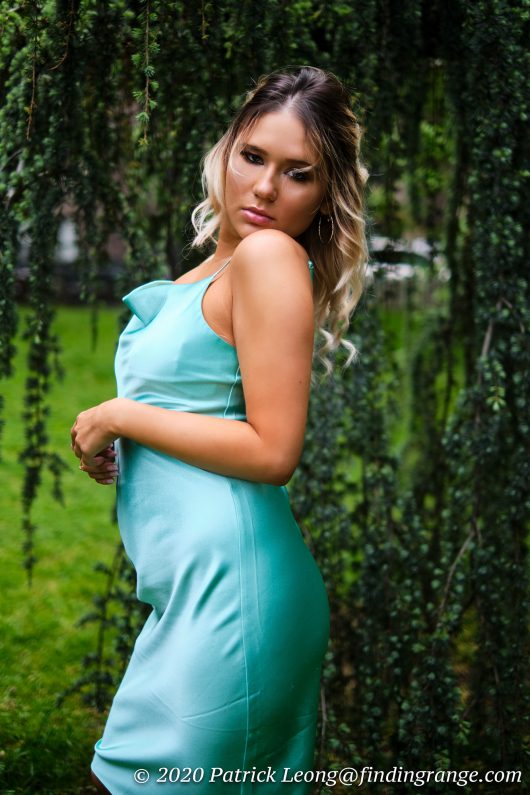
↑ This was also taken with the XF 35mm at f1.4. 200 ISO was used.

↑ This was taken with the XF 18-55mm with 160 ISO at f8.

↑ This was also taken with the XF 18-55mm with 320 ISO at f8.
Other features include great dynamic range. One of the first characteristics that I noticed was how well the X-T4 RAW files hold up after editing, especially ones that have more contrast. More detail is retained in the shadows, while highlights can be easier to recover. Contrast and color rendering are especially good as well, and to me, better than what I see from any previous X Series camera without this sensor.

↑ This was taken in the morning with the XF 18-55mm. The settings were 160 ISO at f5.6. The X-T4 had no problems tracking the runner.

↑ This is a wide open shot taken with the XF 18-55mm with 160 ISO.

↑ This was taken with the XF 35mm f1.4 R lens at f1.4 and 160 ISO
As for high ISO capabilities, you should have no issue using the Fuji X-T4 throughout most of its ISO range. At 1600 ISO there is some noise creeping in but nothing that’s out of the ordinary. At 3200 ISO, you’ll notice more noise but detail is still very high. Color rendering is still great in my opinion. 6400 ISO is where you’ll see more noise but I’ve used this setting often, and achieved great results.

↑ Lens used here was the XF 18-55mm, and this was taken with 1600 ISO at f5.6.

↑ This is a 100% crop of the photo above.

↑ Here’s a shot taken with the XF 18-55mm at 3200 ISO. Aperture used was f5.6.

↑ This is a 100% crop of the photo above.

↑ This was taken with the XF 18-55mm at f5.6 using 6400 ISO.

↑ This is a 100% crop of the photo above.
Overall, I feel I can comfortably shoot up to 6400 ISO with the Fuji X-T4. I feel contrast, and especially color are well retained up to this setting. 12,800 ISO is where things get noticeably more noisy, and where there are more color issues. However, the setting is still usable depending on your subject matter, and exposure. The other two settings are 25,600 and 51,200 ISO, which I save more for emergencies

↑ This photo was taken with the XF 18-55mm using 12800 ISO. The lens was set at f5.6.

↑ This is a 100% crop of the photo above.

↑ This was shot with the XF 18-55mm at f5.6 using 6400 ISO.

↑ This is a 100% crop of the photo above.

↑ This photo was shot with the XF 18-55mm using 25600 ISO and f5.6.

↑ This is a 100% crop of the photo above.

↑ Here’s a shot taken with the XF 18-55mm using 51200 ISO at f5.6.

↑ This is a 100% crop of the photo above.
With all that said, I feel the X-T4 files are slightly noisier than files from the X-T2. I did mentioned this in my X-T3 review as well. Apparently, there are others that feel the same. However, it’s not really that bad at all, and what you gain from the trade off when it comes to color, contrast, and a generally more flexible file to work with is well worth it.

↑ Here’s a shot of the Woolworth building. I used the XF 18-55mm set at f8. 160 ISO was used.

↑ Here’s one taken with the Fujifilm X-T4, and Zeiss Touit 12mm f2.8 combo at f5.6 and 160 ISO.

↑ This was taken with the XF 35mm f1.4 R lens at f1.4 and 160 ISO.
Now, I am a RAW shooter but for those who are not interested in post-processing photos or have no issue working on out of camera jpegs, the Fuji X-T4 produces excellent out of camera jpegs that often times require little to no editing. The film simulation modes as Fuji calls them are fantastic, and there is enough variety that most will be quite content. They all work great but I must admit that I like the Provia Mode best, which is actually the default setting.

↑ I used the XF 18-55mm here at f5. 160 ISO was used.

↑ 160 ISO was used and the XF 18-55mm was set at f5.6.
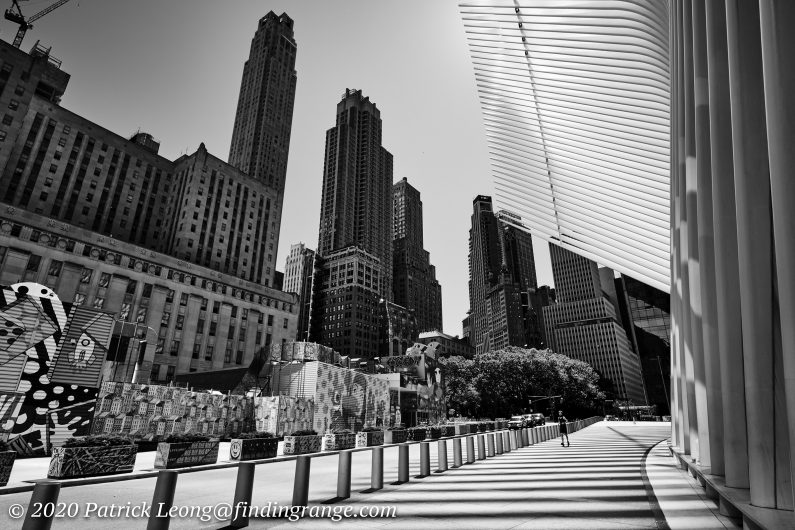
↑ This was taken with the Zeiss Touit 12mm f2.8 at f8 and 160 ISO.
Fujifilm X-T4 Mirrorless Camera Pros And Cons:
Fujifilm X-T4 Mirrorless Camera Pros:
- Well-made and built to handle pro use.
- Great ergonomics; the slight increase in size when compared to its predecessor makes the camera more comfortable to hold.
- Weather sealed.
- Fully articulating LCD display.
- Excellent EVF.
- Impressive electronics.
- Ultra Fast autofocus.
- Superb image quality.
- Great out of camera jpegs that require little to no editing.
- Excellent high ISO capabilities.
- Great selection of lenses.
- Finally IBIS!
- Larger battery!
Fujifilm X-T4 Mirrorless Camera Cons:
- Overall, fantastic camera but the price does put you in full frame territory now.
Fujifilm X-T4 Mirrorless Camera Verdict:
Overall, the Fuji X-T4 is a superb camera, and further improves on it’s predecessor, which is already very difficult to do in the first place, since the X-T3 was such a great camera. The only two cons that I had mentioned in my Fuji X-T3 review were lack of IBIS and lack of a larger battery. Those cons on my list have been resolved with this new model. In addition, there are other enhancements like the improved shutter system, and vari-angle LCD display design, for example, that only make this camera even better. Right now, this is easily one of the best APS-C mirrorless cameras on the market that you can purchase. I sincerely mean it. For an X-T series camera, it’s just about perfect.

↑ I used the 35mm f1.4 R lens here set at f1.6. The ISO used was 160.
With that said, at a price of $1,699, the X-T4 is near or at full frame territory. The list price of a Nikon Z6, for example, is $1996.95, and there is even a rebate right now knocking the price down to $1,796.95. There’s also the new full frame Nikon Z5, which is priced at $1,396.95.

↑ This was taken with one of my favorite lenses: the Zeiss Touit 12mm f2.8. The settings were 160 ISO and f8.
Of course, each camera has its own unique features that sets it apart from the pack, and for the X-T4, I feel one great example that it has going for it is the manual controls. There really aren’t many cameras with these types of controls in this price range. They make operating the camera not only easier and faster, they also make the camera more fun to use, and really help you get more fully involved in the photographic process. The point that I’m getting at though is for the price, there are many more competitors out there, which is good or bad for us depending on how you look at it: good because with more choice, we can get a camera that truly fits our needs but bad because sometimes too much choice leads to indecision ;).

↑ This was taken with the XF 18-55mm at f2.8. 160 ISO was used.
It’s also worth nothing that while I find the Fuji X-T4 pretty much perfect for an X-T series camera, some X-T3 users might not feel the need to upgrade simply because the X-T3 was already so close to perfection. I’m one of these users. The X-T3 wasn’t even two years old before the X-T4 was released, and in some ways, it feels kind of like a P version of a Leica M digital camera. In other words, it feels more like a refresh or a mid cycle update to me.

↑ This was taken with my XF 56mm f1.2 R APD lens. The settings were f1.2 and 200 ISO.
Again, I’m not knocking the Fuji X-T4 in any way; like I said, I feel it’s pretty much perfect for an X-T series camera, and it’s definitely one of the best in the APS-C world regardless of manufacturer but there are features that while are great to have, they aren’t necessarily that important to me or at least important enough where I feel the need to upgrade. For instance, IBIS is always good to have in a camera, and I agree it should’ve been in the X-T3. However, having it or not doesn’t really affect the way that I shoot. I haven’t had an issue holding my X-T3 steady, and my model shoots are usually done with higher shutter speeds anyway to be able to freeze a model’s movement. As for the LCD display, I agree it’s definitely an improvement, and makes the camera more versatile. However, I’m mainly a stills photographer, and I don’t need the fully articulating screen. I actually prefer the one on the X-T3. Lastly, I love the improved shutter, and the larger battery but I don’t think those are enough to push me forward to purchasing a new camera. In many ways, the X-T3 is close enough to perfection; the electronics are similar and the image quality is basically the same.

↑ This was taken with the XF 35mm f1.4 at f8 and 160 ISO.
Of course, this is just me, and for others, it may be different. For instance, you may be new to the Fujifilm system, which in that case, I imagine the X-T4 is very enticing although with the discounts they are giving for the Fuji X-T3, that’s something you should also consider (currently $999). If you’re not new to the Fuji system but you’re a vlogger, for example, the new LCD display, and IBIS can be quite important. Lastly, if you simply want the best that Fuji has to offer, then you don’t need to look any further. If my circumstances were different too, I would probably go for the X-T4. Here’s a couple of examples: if I owned the X-T2 instead of my X-T3 or I was new to the system, I would most definitely consider the X-T4.

↑ I used the XF 18-55mm here and had it set to f8. 400 ISO was used here.
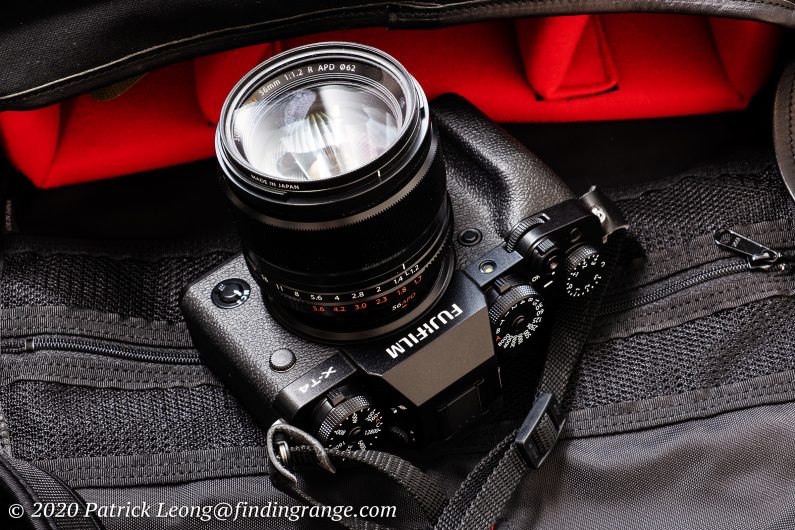
↑ One more shot of the Fuji X-T4.
But bottom line is the X-T4 is seriously an amazing camera. It’s so good now that I can’t even imagine what they would do with the X-T5 because there’s pretty much nothing wrong with the X-T4 in my eyes. Whatever area of photography that interests you most, the X-T4 will be up to the challenge. If you’re looking for one of the best APS-C mirrorless cameras that you can currently purchase, the X-T4 should definitely be on your short list of cameras to consider.
Thanks for taking the time to read my review! If you’re considering purchasing the X-T4, and my review helped you decide, please help support this site by purchasing from the link below or any mentioned in this review. It will not cost you anything extra. Thank you for your support!

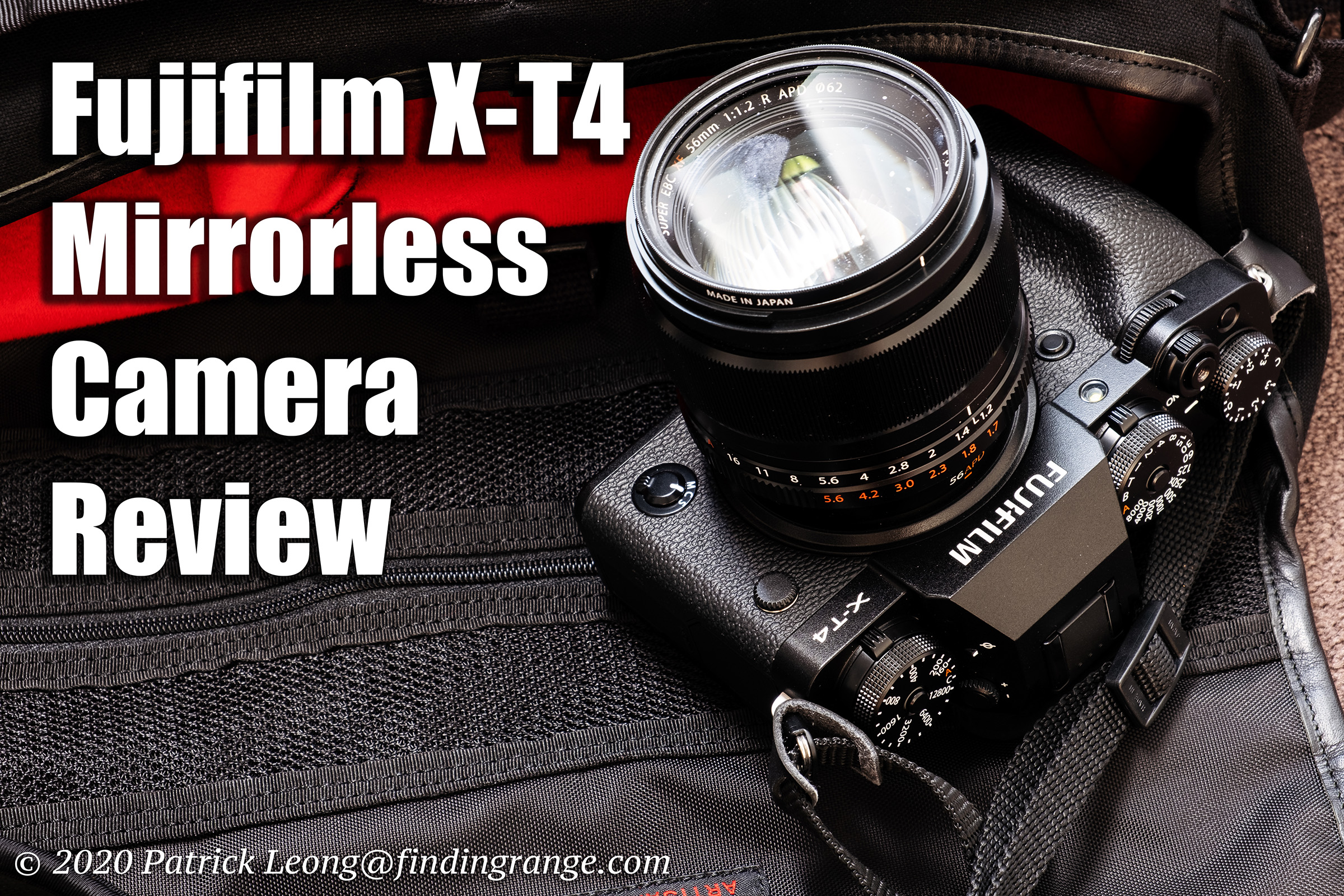
Hi Patrick,
As usual, an excellent review. Having said that, I’ll happily stick to my X-T3 for the time being.
Cheers,
Steve